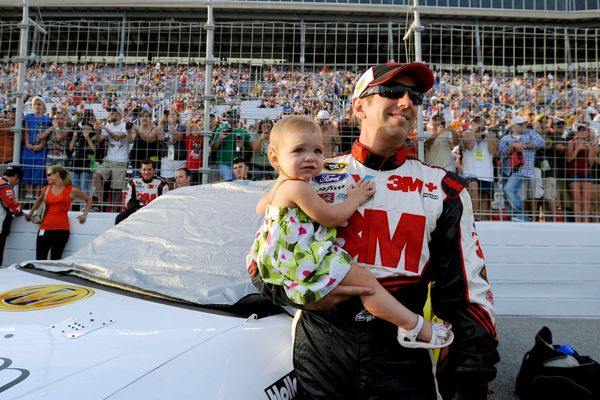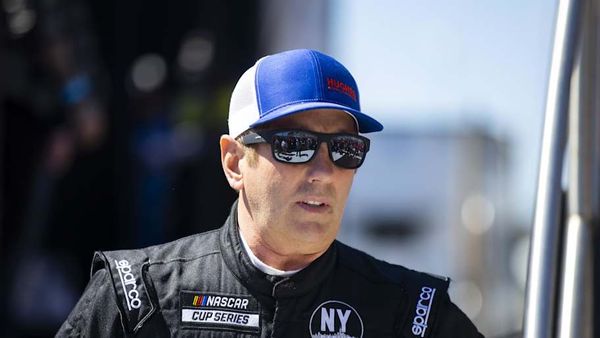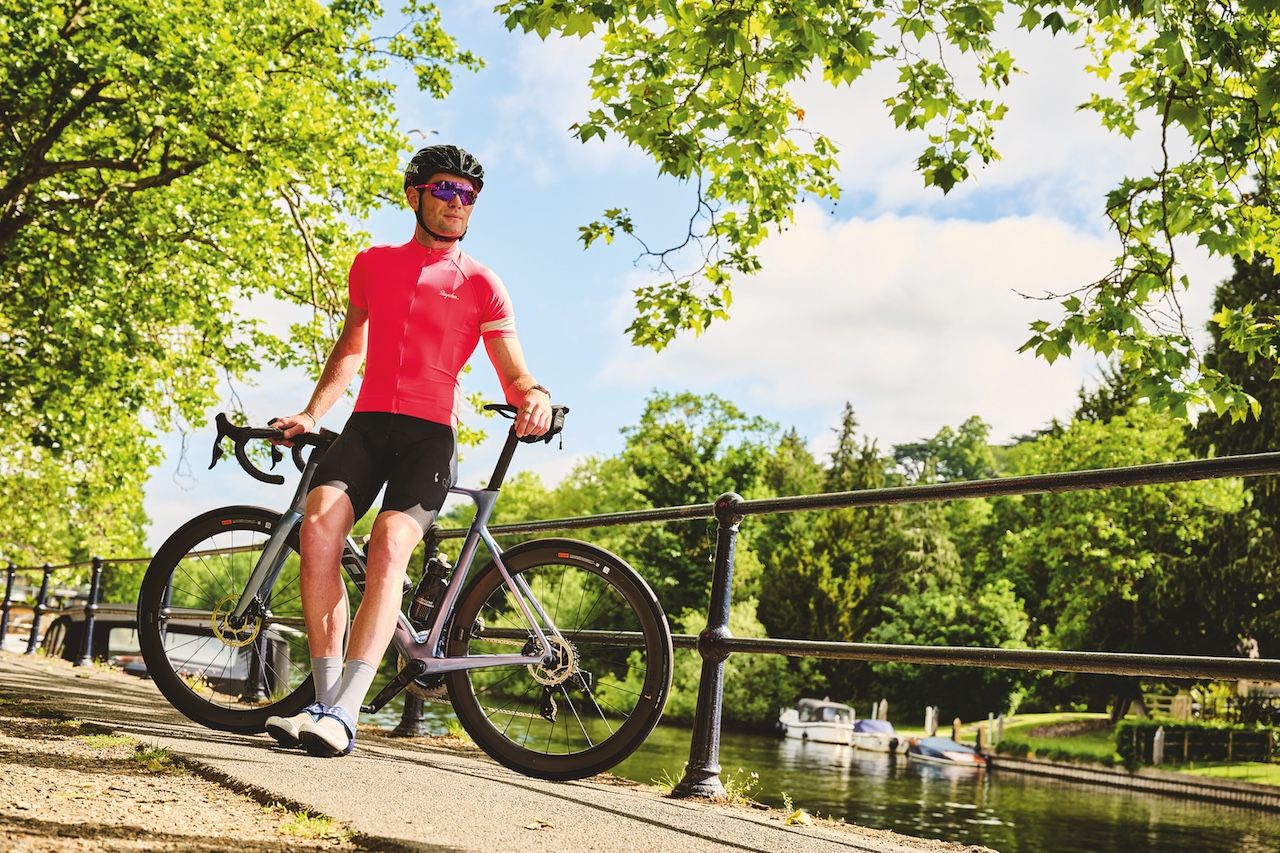
This feature originally appeared in the 12 June 2025 print edition of Cycling Weekly, on sale in newsagents and supermarkets, priced £3.35. You can subscribe through this link here.
Cyclists chase watts per kilo with obsessive precision – but what’s the real cost of pursuing extreme leanness? While stories of disordered eating in the pro peloton occasionally make headlines, the true scale of the issue remains dangerously under-acknowledged, especially among male riders. I know this from experience.
In 2020, I was diagnosed with anorexia. Now, looking back, I realise the first signs I showed of an eating disorder came in 2018, at the age of 22. I had started controlling what I ate as a way of coping with adult life, having finished my education and stepped into the wider world. I felt a sense of solace and achievement in limiting my food, and I was motivated to continue, particularly as society rewarded the ‘discipline’ of my slowly shrinking frame.
Well-meaning friends and family told me I was beginning to look like a “real athlete”. To almost everyone, I was thriving, young, and keen to stay fit – a perception that suited me fine. The shame that accompanies an eating disorder turned me into a great liar, an expert at hiding my struggles, and over time, as my behaviours continued to go unchallenged – or were even praised – they gradually became more pronounced.
I first found joy in cycling when I hopped on a Wattbike in the gym. It allowed me to switch off, escape the world, sweat and move. In a short time, though, I became hooked, and with the arrival of Covid-19 in early 2020, I began to spiral, spending hours upon hours every day on the stationary bike in my family home. I rode on little to no food to fuel my body, and only really stopped to shower, sleep and go out for a short walk. I was caught in an exhausting routine that I knew was killing me, but I was petrified to step out of it. Only now, after years of treatment and therapy, am I in a place where I can again ride competitively and begin to speak out about eating disorders in men.
It is impossible to say how many men in the UK suffer from an eating disorder, as the research does not exist. The basic estimate widely cited is 25% of the number of females affected – but this seems to me to be far too simplistic. A more realistic estimate suggests that men may represent up to 40% of eating disorder cases but are less likely to be identified and treated. Even among women, though there is greater awareness, the diagnosis and care of eating disorders remains far from perfect.
When it comes to male cyclists, eating disorders are severely underreported. Way back in 2007, a study published in the Journal of the American Dietetic Association found that 19.7% of competitive male cyclists surveyed were at risk of disordered eating behaviours. Notably, only a fraction of these men self-identified as having an eating disorder, suggesting underreporting and lack of awareness. The estimated figure of 20% of male cyclists being at risk of developing an eating disorder may be far too low.
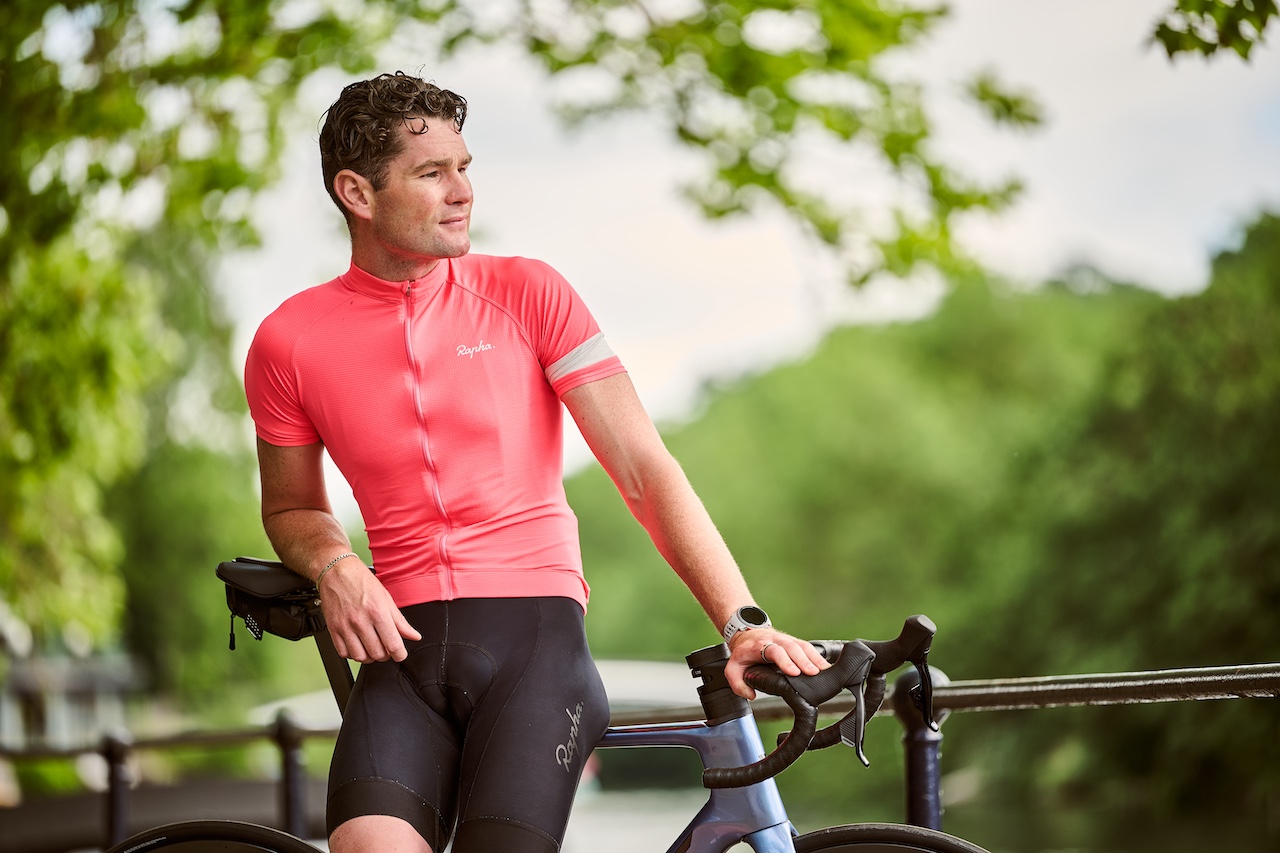
Tip of the iceberg
In 2020, research comparing cyclists and triathletes revealed that 17.1% of male cyclists were at risk of developing an eating disorder, compared to 15.6% of male triathletes. Based on my conversations with cycling insiders, 17.1% is unrealistically low. The British Journal of Sports Medicine has reported that, of male athletes with eating disorders, less than 10% seek professional help or receive a formal diagnosis. The known cases may be the tip of the iceberg.
The intersection of performance obsession, weight-consciousness and metrics culture in cycling is the perfect recipe for disordered eating and body image issues. Cycling by its nature rewards a leaner, lighter frame. Performance-minded cyclists are innately highly motivated individuals and if they see improvements linked to weight loss, that can become addictive to the point where there is still a drive to restrict food even after gains cease. For many, cycling is not just a hobby but a way of life inextricable from self-worth, discipline and identity.
Watts per kilo being a core performance indicator in cycling is a huge factor in cyclists restricting their eating. Cycling’s ‘metrics culture’ – with Strava, TrainingPeaks, Garmin, MyFitnessPal, etc, to measure everything – encourages constant tracking. The lighter the athlete, the higher the watts per kilo – but getting ever lighter is not sustainable. Once a rider becomes preoccupied with weight loss, they are at far greater risk of developing an eating disorder.
Privateer racer and CW contributor Joe Laverick has been candid about his experience. “Negative food relationships became part and parcel of the job,” he says. Over time, Laverick learned the cost – burnout, especially after the five-day Redlands Classic in 2024. His coach’s mantra now rings in his ears: “What’s the return on investment?” If underfueling won’t help him, it’s off the table. While Laverick hasn’t witnessed overt purging behaviours among pro riders, conversations about “eating too much” were common. Encouragingly, he believes awareness is growing. “Nutrition is left to nutritionists now,” he says, “not coaches.”
Slave to the calorie counter
At the peak of my eating disorder, I would go as far as counting out cherry tomatoes and weighing salad leaves in order to keep my MyFitnessPal calorie tracking as accurate as possible. This kind of obsessive behaviour begins to take over your life. I had been ‘functioning’ with an eating disorder since late 2018, but was forced to confront it when, during the rolling lockdowns of Covid-19, I became critically unwell.
I had left London and returned to our family home in Ireland, with no job and confined to the house and a small patch of Irish countryside. I would cycle for hours, eating very little food. I may have started riding a bike to keep fit, but my mind made a lethal shift to using cycling as a way to exert control over my body. Gaining weight became a really unsettling prospect, missing one of my many daily sessions was anxiety-inducing, and eating became a shameful experience.
The double whammy of depression and anorexia was becoming a life-threatening mix. Without help, either suicidal thoughts or chronic under-eating were going to kill me.
It wasn’t until the end of September 2020 that I finally showed signs of being open to intervention. It was the moment my parents especially were waiting for. Without their emotional and financial support I would not be here today. Before I knew it, I was sitting in front of a psychiatrist for an assessment. I don’t remember much about that appointment, but I do remember the official diagnosis. Being told I had anorexia, depression and a form of exercise addiction didn’t feel cathartic; instead, I sat there blank-faced and just said “OK”. It was all too much for me to fully comprehend at the time, and I had become so despondent that I just went with the current, which thankfully led me to recovery.
Since my diagnosis, while no longer on antidepressants or in formal treatment for my eating disorder, I remain in therapy. Having spoken to cyclists and experts for this feature, I’m hopeful that pro teams are developing greater awareness of the risk of eating disorders. Coaches need to be vigilant of their athletes’ eating habits, and any concerns should prompt referral to an eating disorder specialist or sports psychologist. There have been improvements. For example, British Athletics coaches suspend the training of any female athlete who has not had a period for two months. No such protocol exists for male athletes, of course – but there are tell-tale signs in men. Loss of libido and absence of morning erections indicate that the male body is seriously short on energy.
The problem is not solely that men are reluctant to open up – the research needs to catch up too. If men like me are willing to revisit the darkest days of our eating disorders to help raise awareness, our impact is limited by outdated, insufficient and, in certain areas, non-existent research.
If there’s one fact we can’t afford to ignore, it’s this: eating disorders have the highest mortality rate of any mental illness. An estimated 5-10% of people with anorexia will die from the condition. I’ve been lucky – sustained by the steady support of family and friends, I’ve learned to live with and manage my illness. But no athlete, male or female, should ever find themselves on that dangerous path. We need to talk more, act sooner, and do better – because for some, the stakes are nothing less than life itself.
If you’ve been affected by the issues raised in this article, help is available from Beat: beateatingdisorders.org.uk
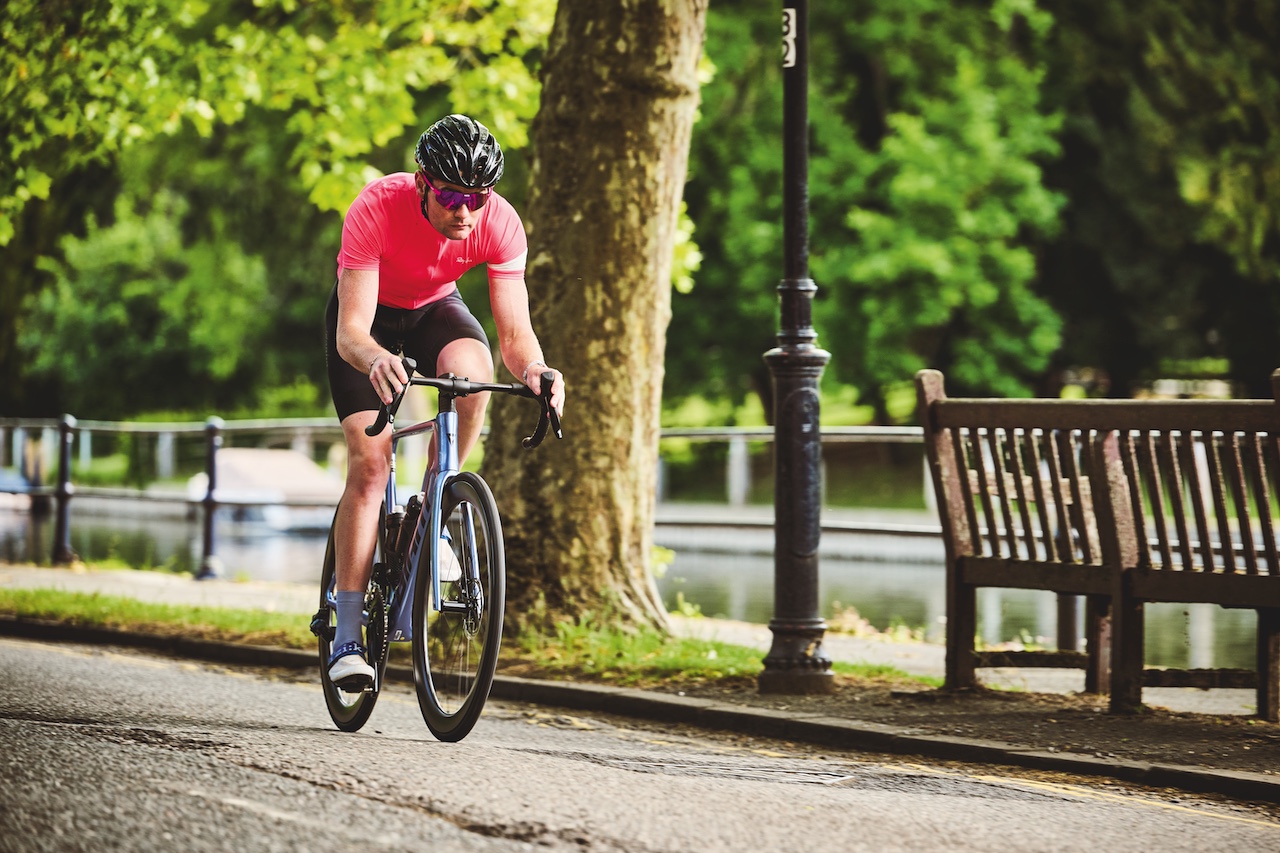
Eating disorders: the stark statistics
17% The estimated percentage of competitive male cyclists at significant risk of disordered eating behaviours.
6% The estimated percentage of competitive male cyclists who have fallen prey to disordered eating.
5x Reported increase in male cyclists referred for eating disorders over a single year (2019).
79% The estimated percentage of male cyclists reporting having deliberately tried to manipulate their body weight in the last 12 months, with 95% of these doing so with the aim to lower their weight.
69% The percentage of cyclists who reported using deliberate reduction in food intake as a form of weight loss strategy.
46% The estimated percentage of male cyclists who’ve felt pressure from coaches or team-mates to lose weight.
Spotting the signs
To better understand how disordered eating can take hold in cyclists, I spoke with sports psychologist Dr Josephine Perry. She outlined the ‘three Ps’ that coaches, friends and family can use to spot the signs.
1. Predisposing traits
Cyclists often exhibit the classic triad of anxiety, sensitivity and perfectionism. These traits can drive athletic success – meticulous attention to detail, relentless effort – but they can also lead to unhealthy behaviours. When these tendencies become obsessive or trigger defensiveness, they may be early signs of trouble.
2. Precipitating behaviours
A single, seemingly innocent comment such as, “If you lost a bit of weight, you’d climb faster,” can trigger harmful behaviours. I know from experience how easily such comments can stay with you, resurfacing years later and derailing progress. Coaches must be mindful of their language – the smallest remark can have lasting consequences.
3. Perpetuating patterns: The ABCDE
To intervene early, be alert to the following signs:
A: Absence – Withdrawing from meals, eating alone or gradually restricting intake.
B: Body – Frequent comments like “I feel fat” are red flags; “fat” is not a feeling – it’s often a mask for low self-esteem.
C: Control – Obsessive eating habits or restrictive patterns (e.g. intermittent fasting) may be rationalised but are risky for athletes.
D: Diet – Cutting out food groups without medical reason can signal disordered thinking.
E: Exercise – Overtraining or “calorie accounting” via rides or workouts is a hidden form of purging.


